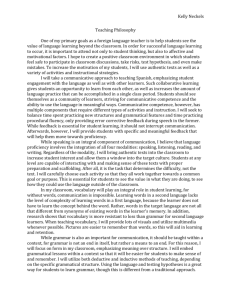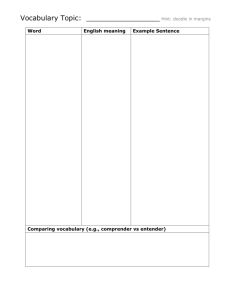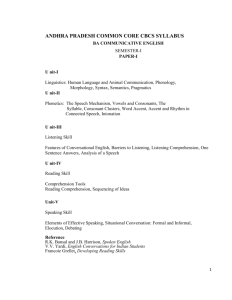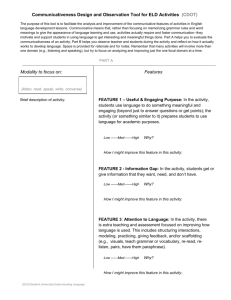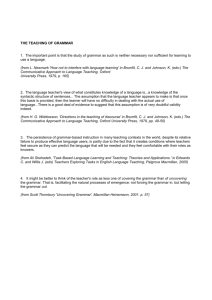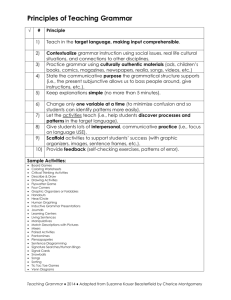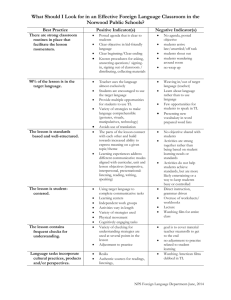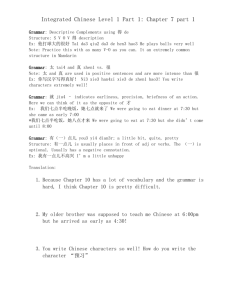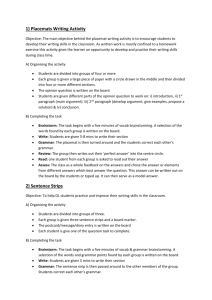Teaching Grammar with Fun Learning Games
advertisement
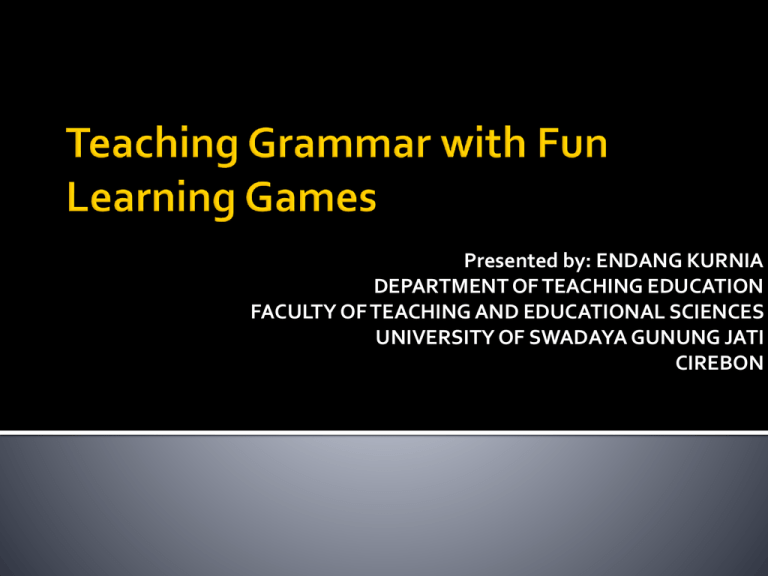
Presented by: ENDANG KURNIA DEPARTMENT OF TEACHING EDUCATION FACULTY OF TEACHING AND EDUCATIONAL SCIENCES UNIVERSITY OF SWADAYA GUNUNG JATI CIREBON English is so widely spoken, it has often been referred to as a "world language", English is an official language of the United Nations and many other international organisations, including the International Olympic Committee. Books, magazines, and newspapers written in English are available in many countries around the world. English is also the most commonly used language in the sciences Student condition: 1.Easy to be bored 2. Hard to be focus 3. Hard to be interested continuously Games help and encourage many learners to sustain their interest and work. Games also help the teacher to create contexts in which the language is useful and meaningful. 1. Games are a welcome break from the usual routine of the language class. 2. They are motivating and challenging. 3. Learning a language requires a great deal of effort. Games help students to make and sustain the effort of learning. 4. Games provide language practice in the various skillsspeaking, writing, listening and reading. 5. They encourage students to interact and communicate. 6. They create a meaningful context for language use.' * A game must be more than just fun. * A game should involve "friendly" competition. * A game should keep all of the students involved and interested. * A game should encourage students to focus on the use of language rather than on the language itself. * A game should give students a chance to learn, practice, or review specific language material. Affective Cognitive Class Dynamics Adaptability - lowers affective filter - encourages creative and spontaneous use of language - promotes communicative competence - motivates - fun - reinforces - reviews and extends - focuses on grammar communicatively - student centered - teacher acts only as facilitator - builds class cohesion - fosters whole class participation - promotes healthy competition easily adjusted for age, level, and interests utilizes all four skills requires minimum preparation after development Research is showing that this is an excellent way to do it. "Games and problem-solving activities, which are task-based and have a purpose beyond the production of correct speech, are the examples of the most preferable communicative activities." They can do this because students are often more motivated to play games than they are to do desk work. Plus, during the game, the students are focused on the activity and end up absorbing the language subconsciously. One can also add that fun learning games usually contain repetition, which allows the language to stick. "the use of such activities both increases the cooperation and competition in the classroom." explains more reasons why games do work for teaching grammar. Learning a language requires constant effort and that can be tiring. Ersoz says games can counter this as because: * Games that are amusing and challenging are highly motivating. * Games allow meaningful use of the language in context. The theory of intrinsic motivation also gives some insight as to why teaching grammar through games actually works. Intrinsic motivation refers to the internal factors that encourage us to do something. Most young learners will not internally decide that they want to learn grammar. They don't yet understand the concepts of why it's important to know proper grammar, so these external factors won't affect them much either. Instead, intrinsic motivation can lead encourage them to play games. If these games are good then they will be learning while they are playing. When you are looking for games to use in your classroom, don't just pick something to be a "time filler" which does not have a definite linguistic outcome. These games may entertain the students, but when you don't have much time with them each day as it is, you want your game to do double duty to get the most out of the time you spend playing games.
